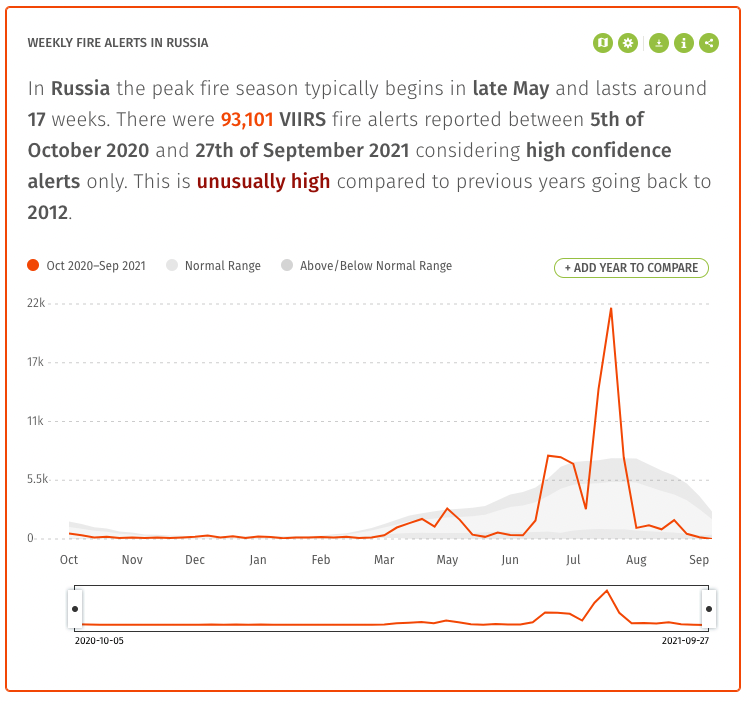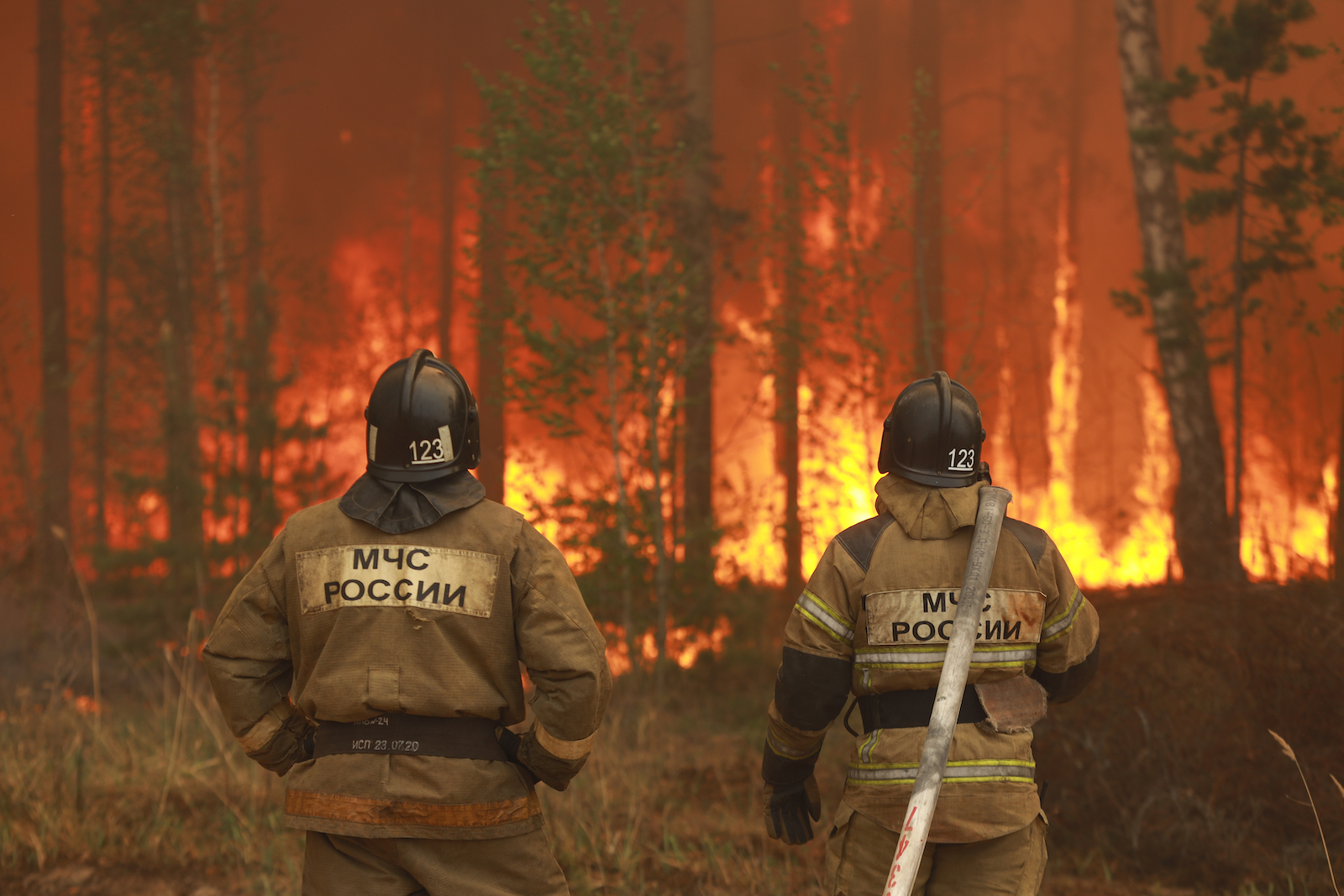In mid August, the leader of the Republic of Sakha, in Russia, told residents not to go outside, and to avoid breathing unfiltered air if at all possible. Wildfire smoke filled the streets of Yakutsk, reducing visibility to less than a block. Smoke spread to the North Pole for the first time ever. It spread across the Pacific Ocean.
Fires in California this year stunned forest stewards with their size and intensity. But they look puny compared to the fires raging in Siberia.
We don’t yet know how much land has been consumed by wildfires this season, that satellite data is still coming in. A report from Greenpeace, based on statistics from Russian fire services, estimates that 65,000 square miles have burned — more than six times the area burned in the United States so far this year. At their peak, in August, 190 blazes were spreading across Sakha and Chukotka, Russia’s farthest northeastern regions.
In July and August, wildfires in northeastern Russia released 806 million metric tons of carbon dioxide into the atmosphere, according to a new report from Copernicus, the European Union’s satellite program. “That’s more carbon than the emissions of the entire country of Germany, one of the largest economies in the world,” observed James MacCarthy, a mapping expert who keeps an eye on the state of the world’s woodlands for Global Forest Watch. “And you are looking at a trend that’s increasing.”

That trend stems from the fact that the world is getting warmer, especially at the ends of the earth. “For the last 14 years or so it’s been well accepted that the rate of heating of polar regions is happening two to four times faster than the rest of the world,” said Mark Parrington, a senior scientist at the Copernicus Atmosphere Monitoring Service.
In 2020, the Russian town of Verkhoyansk reached 100.4 degrees Fahrenheit, the highest daily maximum temperature ever recorded north of the Arctic Circle. It was part of an arctic heatwave that would have been “almost impossible” without human-caused climate change, according to a recent attribution paper in the journal Climatic Change. The normally cold and wet Siberian taiga — or boreal forest, as we call it in North America — broiled and dried out. But that was nothing compared to this year, when the temperature rocketed past last year’s record: Verkhoyansk hit 118 degrees Fahrenheit in June. Already dry vegetation went crisp. Then came the lighting.
In the old days, lightning didn’t strike much north of the Arctic Circle — it simply lacked the warm air to rub up against cold clouds, the recipe for an electrical storm. But now, summers are bringing plenty of warm air to the Arctic, and lighting strikes there have tripled in the last decade.
It’s no surprise that the combination of hot, dry forests and lightning is producing a lot of fires. Total carbon emissions from wildfires worldwide was 1.4 billion tons in August, about half as much as the monthly emissions from fossil fuels.

Historically, fires have been part of the planet’s annual cycle of respiration: Forests burn in the dry season, releasing carbon, but then grow back, sucking that carbon up again. But these Arctic fires represent a deviation from the cycle. It’s an example of a feedback loop, where climate change begins generating more greenhouse gases, leading to faster warming. Even if the world quickly ditches fossil fuels, increased emissions from Arctic fires may be locked in, at least for the next 100 years or so.
But that doesn’t mean there’s nothing humanity can do. Even with the outsized fires in the Arctic, most emissions from fires worldwide still come from the tropical regions, Parrington said. In Africa, Latin America, and Southeast Asia, where people are cutting down forests and setting the wood alight to create pastures and farms. If governments protect forests from land grabbers, provide a path out of poverty for slash and burn agriculturalists, and provide the techniques and technologies that allow people to grow more food on less land, total wildfire emissions would plummet — even as conditions for wildfires worsen.



